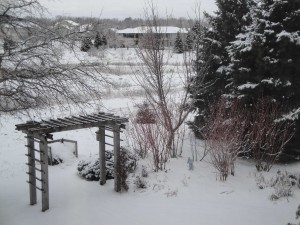Will Your Plants Survive This Super-Cold Spell?

School is closed Monday, travel is considered dangerous, and Minnesota gardeners are looking out at their shrubs, trees and perennials and wondering, “Can my plants survive this super-cold spell?”
The short answer is: Many will do just fine. Some not-so-much, and which is which depends on several factors.
First, are they adapted to the cold? Plants that are hardy to USDA Zone 4a can survive air temperatures as low as minus-30 degrees F. Those rated for zone 3a (now just the top third of Minnesota is zone 3b or 3a) can handle temps down to minus-40 and grow fine next spring. Fortunately, wind chill is not an issue for plants (only warm-blooded creatures such as dogs and humans feel that.) So, those scary, scary numbers you see the weather folks putting out will not hurt your plants — just you.
Second, are they protected? Many gardeners know there is a spot in their landscape that’s just a bit warmer than the rest of the yard — maybe it’s a corner on the south side with walls or shrubs around it. These micro-climates can be much warmer than the rest of the landscape and are often a good place to put marginally hardy plants. There’s a reason you see Japanese maples (definitely a zone 5 tree) in courtyards near the front door or other protected spots. Snow is also a factor. In fact, snow is a great insulator. The light snow that falls in very cold temperatures has a high percentage of air in it (sometimes up to 90 percent), which keeps the temperatures at ground level, where your plants are, warmer. Many gardeners add mulches, like straw or leaves, after the ground freezes to increase insulation.
Finally, what is the health of the plants? This past summer, I divided a lot of hostas and planted them in a new garden. They were mulched with leaves this fall, and they have some snow on them — my guess, 3 to 5 inches. But in a few spots the leaves blew off and the snow cover is less. Plants that are just getting established or are stressed in some other way (disease, crowding, root damage) are more likely to be damaged or killed by the cold.
From a plant’s perspective, cold in January is not nearly as bad as unexpected cold in spring. Many Minnesotans remember our remarkably early spring in 2012, followed inevitably by a freeze, which seriously damaged apple crops as well as garden plants all over the state.
For more information on cold and plants, check out this publication on trees and shrubs from the University of Minnesota Extension.
